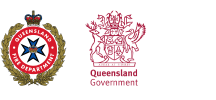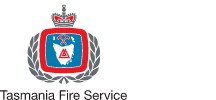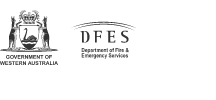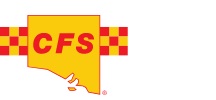
This project will use empirical evidence and collaborative processes to contribute to and support a national approach to the future use of public-facing predictive fire spread products during an emergency.
The use of fire predictions has received increasing attention since the 2019/2020 fire season when 'Red Maps' were released to the public in NSW, Victoria and the ACT. The Bushfire and Natural Hazards CRC-funded Black Summer project, Established and emerging uses of predictive services, found that there is much support amongst operations staff in Victoria for the dissemination of fire spread prediction maps to the public. Further, recent post-event inquiries have recommended greater use of fire spread predictions in public messaging.
However, the translation of inquiry recommendations and internal support into action remains contentious, especially without evidence-based guidelines on how predictive maps should be designed and communicated, and how and when they should be disseminated to the public.
The Steering Committee for this project comprises representatives from the AFAC Predictive Services Group, the AFAC Warnings Group from all Australian states and territories, and the Bureau of Meteorology.
Involving the community is fundamental to designing maps that work, most especially since communities have a range of information needs and levels of experience with both fires and bushfire maps. Therefore, in this project, a user-centred, multi-method approach will be used to explore and refine design alternatives through an iterative process.
This project aims to define the role of fire predictions in agency communications with the public during an emergency, with three phases:
Phase 1: Understanding the status quo. What do agencies aim to achieve by using the current public information and warnings products? How do members of the public comprehend and intend to use existing products?
Phase 2: The primary objective of Phase 2 is to develop principles for the standardised use of predictive maps within the Australian Warning System. These guidelines will build on the results of Phase 1 by developing a set of maps based on the best practice principles and end user needs identified during that phase. These maps will be tested and validated with members of the community.
Phase 3: The objective of Phase 3 is to develop practical outputs that ensure that the results of the research conducted in the project are able to be utilised. One practical output has already been defined, evidence-based principles for predictive map design, communication and dissemination. Based on the research findings from Phase 1 and 2, the additional 2 practical outcomes will be defined in collaboration between the research team and the project Steering Committee.
| Date | Type | Title |
|---|---|---|
| 9 March 2023 | Presentation | Tim Neale - Black Summer Webinar 2 presentation |
| 2 May 2023 | Presentation | Chloe Begg - 2023 Natural Hazards Research Forum presentations |
| 3 May 2023 | Workshop material | 2023 Natural Hazards Research Forum workshop slides: Stream 1, Workshop 1 |
| 15 May 2024 | Presentation | Chloe Begg & Erica Kuligowski - 2024 Natural Hazards Research Forum presentation |
| 22 July 2024 | Hazard note | Hazard Note 5: Community comprehension, perception and use of maps during bushfires |
| 2 July 2025 | Presentation | Chloe Begg - Natural Hazards Research Forum 2025 presentation |
| 19 June 2025 | Presentation | Chloe Begg - Natural Hazards Research Forum 2025 presentation (2) |


















